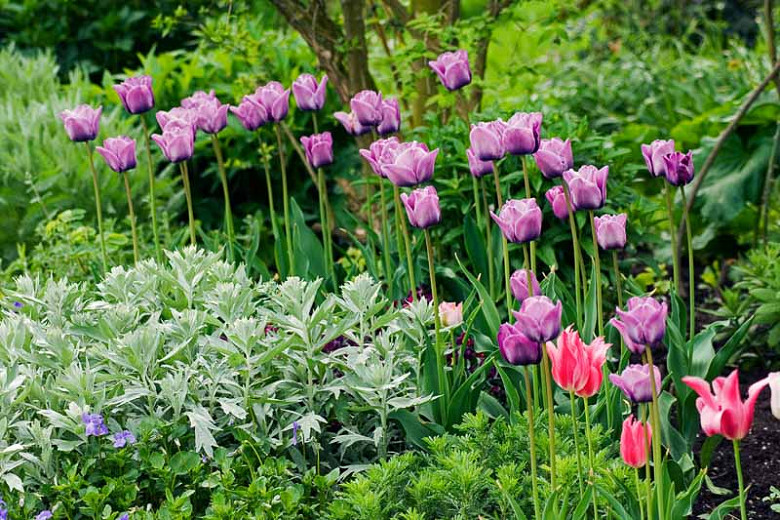The Best Companion Plants For Mugwort
Introduction
Mugwort (Artemisia vulgaris) is a hardy perennial herb that is native to Europe, Asia, and North America. It has a long history of use in traditional medicine, and is also used in cooking and as an insect repellent. Mugwort is a relatively easy plant to grow, and can be grown in full sun or partial shade. It prefers well-drained soil, and is drought tolerant.
When planting mugwort, it is important to consider its companion plants. Some plants can benefit from being planted near mugwort, while others may be negatively affected. In this blog post, we will discuss the best companion plants for mugwort.
Main Content
Companion Plants That Benefit Mugwort
There are a number of plants that can benefit from being planted near mugwort. These plants include:
- Carrots: Mugwort is said to repel carrot fleas, which can damage carrot plants.
- Onions and leeks: Mugwort is also said to repel onion and leek thrips, which can also damage these plants.
- Sage: Sage and mugwort are both known for their insect-repelling properties. Planting them together can help to create a pest-free zone in your garden.
- Rosemary: Rosemary and mugwort are both Mediterranean herbs that thrive in full sun. Planting them together can help to create a visually appealing and drought-tolerant garden bed.
- Thyme: Thyme and mugwort are both members of the mint family. They have similar growing requirements and can be planted together in a herb garden.
Companion Plants That Are Harmed by Mugwort
There are a few plants that should not be planted near mugwort. These plants include:
- Tomatoes: Mugwort can inhibit the growth of tomato plants.
- Cucumbers: Mugwort can also inhibit the growth of cucumbers.
- Brassicas: Mugwort can attract cabbage moths, which can damage brassica plants.
- Potatoes: Mugwort can attract potato beetles, which can damage potato plants.
Conclusion
By carefully considering its companion plants, you can help to ensure that your mugwort plants thrive. By planting mugwort near beneficial plants, you can create a pest-free zone in your garden. And by avoiding planting mugwort near harmful plants, you can help to protect your other plants from damage.
Mugwort (Artemisia vulgaris) is a hardy perennial herb that has been used for centuries for its medicinal and culinary properties. It is also a popular choice for companion planting, as it can help to repel pests and improve the overall health of the soil.
Some of the best companion plants for mugwort include:
- Cabbages: Mugwort is believed to repel pests like moths and caterpillars that can damage cabbage plants.
- Tomatoes: Mugwort is also believed to repel certain pests that can damage tomato plants, including whiteflies and aphids. However, it is important to keep mugwort at least 2 feet away from tomato plants, as it can inhibit their growth.
- Beans: Mugwort is known to improve the overall health of the soil, which can benefit legume plants like beans.
- Carrots: Mugwort is believed to improve the flavor of carrots when planted nearby. It may also help repel pests like carrot flies and aphids.
- Sunflowers: Mugwort can help to attract beneficial insects, such as ladybugs and lacewings, which can help to control pests in your garden.
If you are interested in learning more about mugwort companion planting, I recommend visiting the website Gardenia Inspiration. This website has a wealth of information on the topic, including a list of recommended companion plants, tips on how to plant and care for mugwort, and recipes using mugwort.
FAQ of mugwort companion planting
- What are some good companion plants for mugwort?
Some good companion plants for mugwort include tomatoes, cucumbers, and strawberries. Mugwort can help to repel pests and attract beneficial insects to these plants. It can also help to improve the soil quality and reduce the risk of diseases.
- What are some bad companion plants for mugwort?
Some bad companion plants for mugwort include beans, cabbage, and brassicas. These plants can compete with mugwort for nutrients and sunlight. Mugwort can also inhibit the growth of these plants.
- How far apart should mugwort plants be planted?
Mugwort plants should be planted about 2-3 feet apart. This will give them enough space to grow and spread.
- When is the best time to plant mugwort?
Mugwort can be planted in the spring or fall. If you are planting it in the spring, wait until the soil has warmed up to at least 60 degrees Fahrenheit. If you are planting it in the fall, plant it before the first frost.
- How do you care for mugwort plants?
Mugwort plants are relatively low-maintenance. They need full sun and well-drained soil. Water them regularly, especially during hot, dry weather. Mugwort plants can be propagated by division or by seed.
Image of mugwort companion planting
5 different images of "mugwort companion planting" from Pinterest:
- Image 1: Mugwort and tomatoes. Mugwort is a natural pest deterrent, so it can help to keep tomatoes free of pests like aphids and tomato hornworms.

- Image 2: Mugwort and lavender. Mugwort and lavender are both herbs that have insect-repelling properties. They can be planted together to create a natural bug barrier in your garden.

- Image 3: Mugwort and roses. Mugwort is said to improve the fragrance of roses. It can also help to deter pests from roses, such as aphids and Japanese beetles.

- Image 4: Mugwort and strawberries. Mugwort is a nitrogen-fixing plant, which means it can help to improve the soil quality for strawberries. It can also help to deter pests from strawberries, such as slugs and snails.

- Image 5: Mugwort and beans. Mugwort is a good companion plant for beans because it can help to repel aphids and other pests. It can also help to improve the nitrogen content of the soil, which is beneficial for beans.

Post a Comment for "The Best Companion Plants For Mugwort"